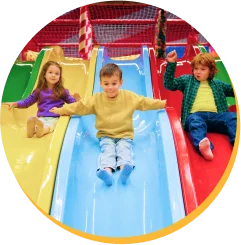For kids, trying new things can be a stressful and daunting experience. Whether it’s introducing a new food, taking on a new activity, or facing a difficult challenge, the idea of venturing out of their comfort zones can often be too much. However, as parents and caregivers, we know that it’s important to foster an environment where our children will feel comfortable being creative and taking risks. One way we can do this is by using the power of positive reinforcement to encourage them to try new things.
What is Positive Reinforcement?
Positive reinforcement means rewarding desirable behavior with something enjoyable or reinforcing. This could be verbal praise or rewards such as stickers or treats. It’s important to note that positive reinforcement should not be confused with bribery – bribes should never be used as an incentive for good behavior as it teaches kids that they must do something to receive something in return rather than doing it simply because it is the right thing to do.
Why Does Positive Reinforcement Work?
Positive reinforcement works because it is powerful tool for teaching kids how to behave in certain situations and how to form good habits. When children are praised or rewarded for doing something well, they learn that their actions have consequences and that performing a desired task will result in a reward – this encourages them to continue engaging in the same desired behavior over time. Additionally, positive reinforcement helps children build self-esteem and confidence which gives them greater motivation when attempting unfamiliar activities.
How Can You Use Positive Reinforcement?
The key to effectively using positive reinforcement is ensuring that your child understands what you expect from them and making sure that you provide consistent feedback about their performance. Begin by setting clear expectations for your child – explain why trying new things is important and discuss what kind of behavior you would like them to demonstrate during these activities (e.g., focus, concentration). Then you should provide regular feedback about their efforts – praising the small successes along the way such as participating in the activity even if they don’t succeed at it right away. Finally, make sure you reward your child with verbal praise or a special treat when they complete a task successfully!
In conclusion, positive reinforcement is an effective way of encouraging your kids to take risks and try new things safely and confidently. Remember that consistency is key when utilizing this technique – so make sure you set clear expectations for your child and provide consistent feedback about their progress to ensure successful results! If you need help getting started with this process, reach out to Jumbaloo for more information about how we can help create strong foundational building blocks for learning


 Don't Miss a Moment of the
Don't Miss a Moment of the